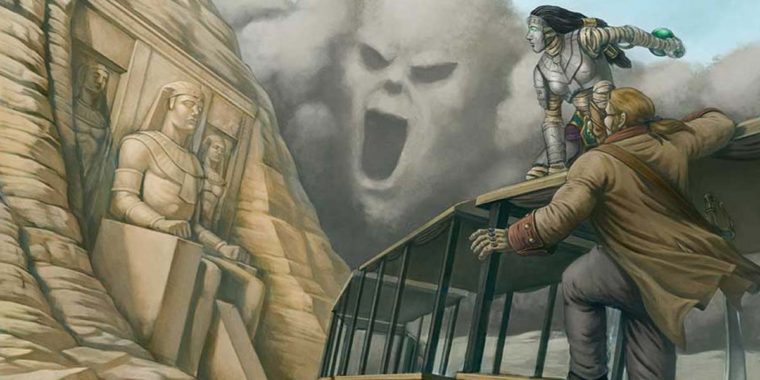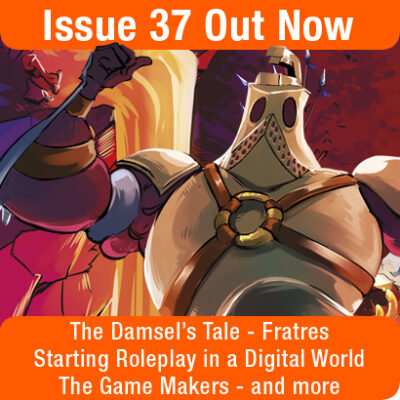This article originally appeared in Issue 11 of The Campaigner, published in 2015. The issue is still available as digital download or in limited print stock.
By Matthew Lee | Images Chris Avellone
This issue The Campaigner talks to Chris Avellone from Obsidian Entertainment (since this interview he has left the company). He tells us about how he started in tabletop, moved into digital games, as well as shares some pointers on creating NPCs like a pro.
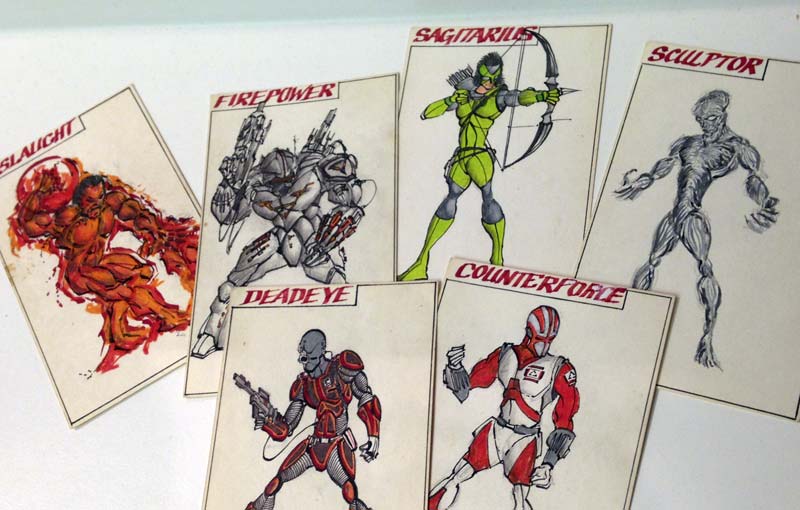
ML: Can you tell us a little about who you are and what you currently do?
CA: Sure, my pleasure: I’m a game designer, largely in narrative design (which is a fancy way of saying ‘writer’, and it’s often the source of much debate as to which term should be used). I am also Creative Director at Obsidian Entertainment, where my role fluctuates on a daily basis, mutating and evolving until even I’m not sure what to expect every day I walk into the office. Well, maybe not every day, but most days. What’s a little weird is that, like most of the owners at Obsidian, I occasionally take on specific roles on specific projects. For example, I’ve been a Project Director, a Lead Designer, a Creative Lead…. and an Area, System, and Narrative Designer… even served in Producer roles on occasion (I helped out a bit with cut scene production pipelines on South Park: Stick of Truth, for example). In those roles, I fulfil the expectations of those positions (overseeing the project, overseeing design, overseeing the story, writing the story, constructing the areas, designing new feats and perks, and so on).
Over the past two years, I’ve been a Senior Narrative Designer on Pillars of Eternity (Obsidian’s Kickstarter), and now Creative Lead on a new project at Obsidian (unannounced).
When I’m not assigned to a specific role on a project, I play builds of our games, review design docs, set up game pitches for new projects, assist with hiring designers, hunt down new designer talent, engage in reviewing and critiquing narrative scheduling and tasking (in tandem with a producer), and much more than I can remember off the top of my head.
Overall, my role is to carry the torch for design principles and practices at the studio with approval and support of the other owners and Project Directors and then do what I can to help the studio reach those goals.
Obsidian’s also a great company in that they’ve allowed me to moonlight, either in tandem with proven partners (like inXile, run by Brian Fargo, who used to be our boss) or other game companies (paper or digital) who are looking for writing support. This extracurricular work often allows me to check out new toolsets, explore new design methodology, and practice narrative design that aren’t necessarily menu-driven dialogue trees, which I think is important.
Along these lines, I’ve worked as a Senior Designer on inXile’s Wasteland 2 (area design and systems, which was nice, because I don’t often get the chance to pitch in on systems), FTL: Advanced Edition with Subset Games, then doing some pen-and-paper work with Melior Via’s Accursed setting (where I wrote the Sand and Stone sourcebook with my old pal from Obsidian, George Ziets – not implying he’s old, mind you, it’s just that we go way back), working on the script for the Grimrock movie with Wayside Creations, and lastly (phew), I’m working with inXile on Torment: Tides of Numenera, and that’s coming along great.
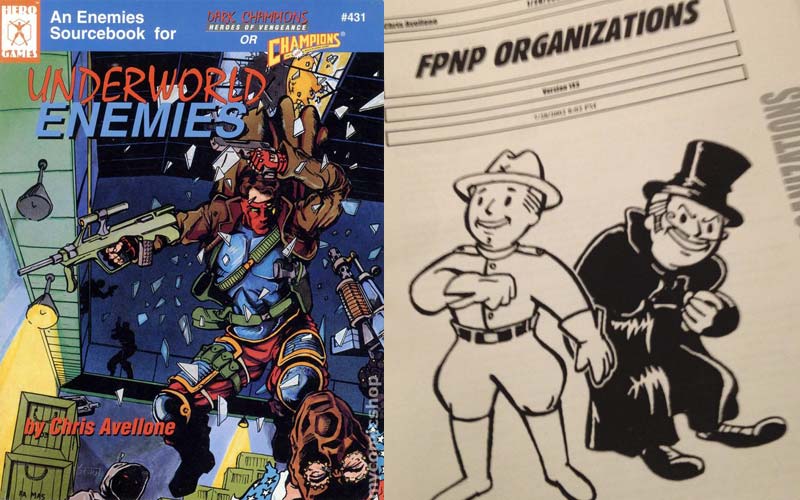
ML: What is your tabletop game experience? Do you currently play tabletop roleplay games, or tabletop games in general? Is so, what are your favourites?
CA: Tabletop games and the laziness of my friends got me into the computer field, actually. It started in junior high school playing D&D (2nd Edition) with Cult of the Reptile God, then Temple of Elemental Evil (which went on for years until it was almost an epic war campaign against the Temple), then Superworld, Champions, Warhammer Fantasy Battle (not an RPG, but…) and Warhammer Fantasy Role-Play.
And usually (well, often) I was the gamemaster for all these game sessions because… well, putting together a game was a lot of work, no one else wanted to do it, and the only way I could play was vicariously, if that makes any sense. Still, it was the best training I could ever have to entertain players, though, and I don’t regret it for a second. Even when I think back to the times when friends would get mad and haggle for experience points per session. Sigh.
A few months ago I was part of a Pathfinder heist-style/Oceans 11 game at work (we played twice a week during lunch), and then before that, a Greyhawk(!) campaign, which was a blast. The last pen-and-paper game I played was actually Numenera with a bunch of guys from inXile, in a game run by Colin McComb (the Creative Lead for Torment: Tides of Numenera), and that was a lot of fun. Even though Colin cheats. Just kidding. He doesn’t cheat. Much.
While I’ve played a lot of game systems and have things that I enjoy about each one, Hero Games’ Champions is near and dear to my heart because I felt you could truly ‘construct’ a hero without being fettered by classes, which felt more like role-playing to me. I also enjoyed the GURPS sourcebooks because they were often very well-written and had a fascinating set of powers and advantages (the Psionics book they did was amazing, as was I.S.T. – International Super Teams).
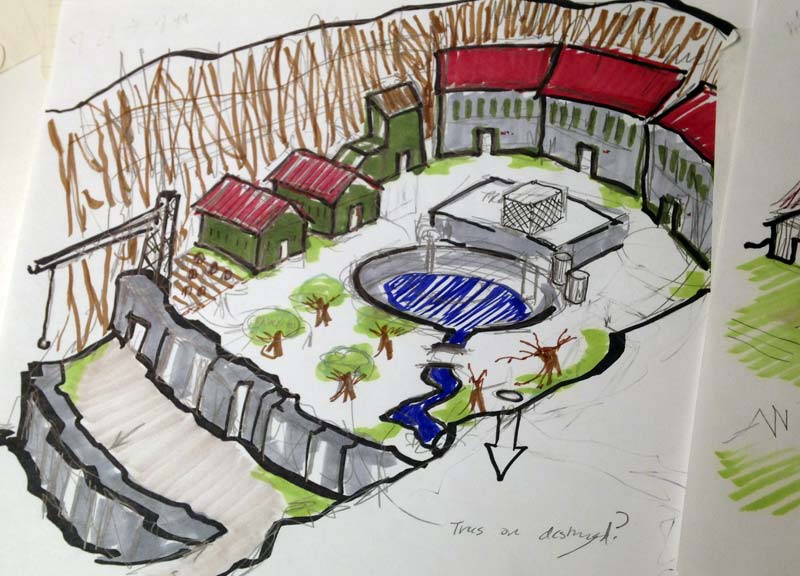
ML: Early on you were doing freelance roleplay game writing for magazines and game publishers. How did you get into this?
CA: Sooooo all the hard work of gamemastering paid off – I thought it was a waste to flush all the work I’d done in setting up modules and adventures (I’d even wrote cut scenes to set the stage on occasion, which helped in doing cinematic design later on), so I started submitting to Dungeon, Dragon, and Hero Games. All of the modules, maps, and even character sketches became part of my portfolio submission.
It wasn’t until Hero Games took a chance with me and contracted me to do one of their villains books for a new Batman-style campaign setting called Dark Champions that I really broke into the arena, doing Underworld Enemies, Dystopia, and articles for Dragon and the Adventurer’s Club (even stick men gaming cartoons for Shadis). Then I used that portfolio to apply for a career at Interplay, since I was hurting for a steady paycheck.
This article and many more are in Issue 11. The issue is still available as a digital download or in print (while stocks last).


